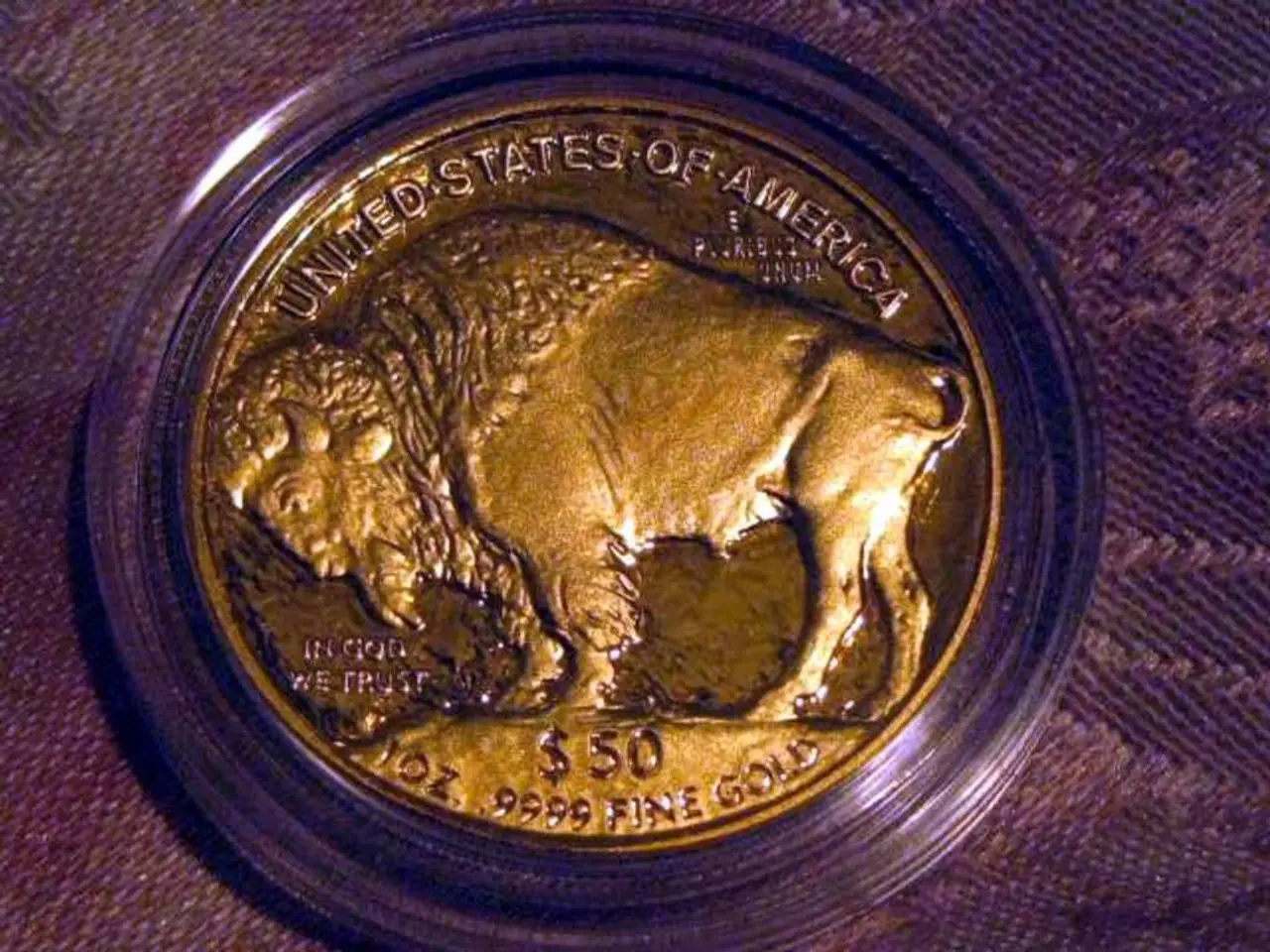Fed's Anticipated Softening Stance Causing Dollar Pressure
In the ever-evolving world of finance, gold prices have been on a rollercoaster ride recently. Here's a breakdown of the key factors that have been shaping the gold market.
The nomination of Stephen Miran as a temporary Federal Reserve Governor could have a significant impact on the gold market. Miran, known for his support of lower interest rates and a more accommodative monetary policy, is seen as a pro-rate-cut vote on the Federal Open Market Committee (FOMC). This shift could lead to expectations of easier Fed policy and a weaker dollar, both of which are generally supportive factors for gold prices.
Miran's nomination comes at a time when President Trump's tariff policies and geopolitical risks are providing safe-haven support for precious metals. The uncertainty surrounding these factors has been driving investors towards gold, a traditional safe-haven asset.
The weaker dollar, a result of Miran's nomination and other factors, has also been supportive of metals' rally. A weaker dollar tends to make gold cheaper for foreign buyers, which can boost demand and drive up prices.
In addition to these factors, gold prices have been influenced by supply disruptions from tariffs on Swiss gold bars. Concerns about these disruptions have led to a surge in gold prices. However, a recent clarification from the Trump administration that gold bar imports should not face tariffs has led to a drop in gold prices.
On the demand side, gold holdings in ETFs have reached a two-year high, and silver holdings in ETFs have reached a three-year high. This increased demand for gold and silver has been a significant factor in the recent rally.
The US's decision to levy a separate tax on imports of electronic products that employ semiconductors could also impact the gold market. The weaker dollar, resulting from this decision, could potentially boost demand for gold and silver.
Looking at the specifics, December gold (GCZ25) closed up by 1.09% on Friday, reaching a 3.5-month high. Similarly, September silver (SIU25) closed up by 0.65% on Friday.
Despite these positive trends, it's important to note that President Trump's announcement of a 100% tariff on semiconductor imports, with companies eligible for exemptions if they demonstrate a commitment to building their products in the US, could potentially impact the gold market in the future.
In Japan, June household spending rose by 1.3% y/y, weaker than expected, while the July eco watchers outlook survey rose to a 6-month high of 47.3. These economic indicators have not had a direct impact on the gold market, but they provide a broader context for the global economic environment.
In conclusion, the gold market is being shaped by a complex interplay of factors, including the nomination of Stephen Miran, geopolitical risks, tariff policies, supply disruptions, and demand dynamics. As these factors continue to evolve, we can expect to see further fluctuations in gold prices.
[1] Source: Reuters, CNBC, Bloomberg
Technology plays a role in the gold market as the US's decision to levy a separate tax on imports of electronic products that employ semiconductors could potentially impact gold prices. The weaker dollar, resulting from this decision, could potentially boost demand for gold and silver.
Investing in gold and silver has been strong, with gold holdings in ETFs reaching a two-year high and silver holdings in ETFs reaching a three-year high, contributing to the recent rally.




